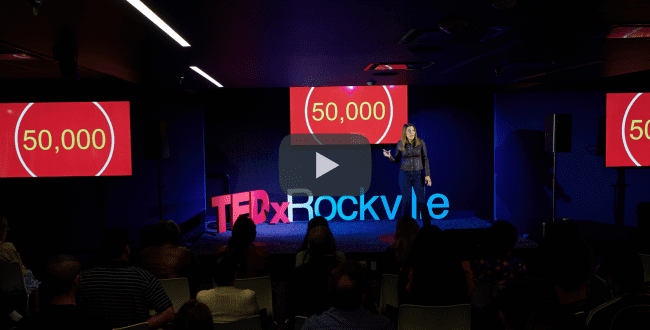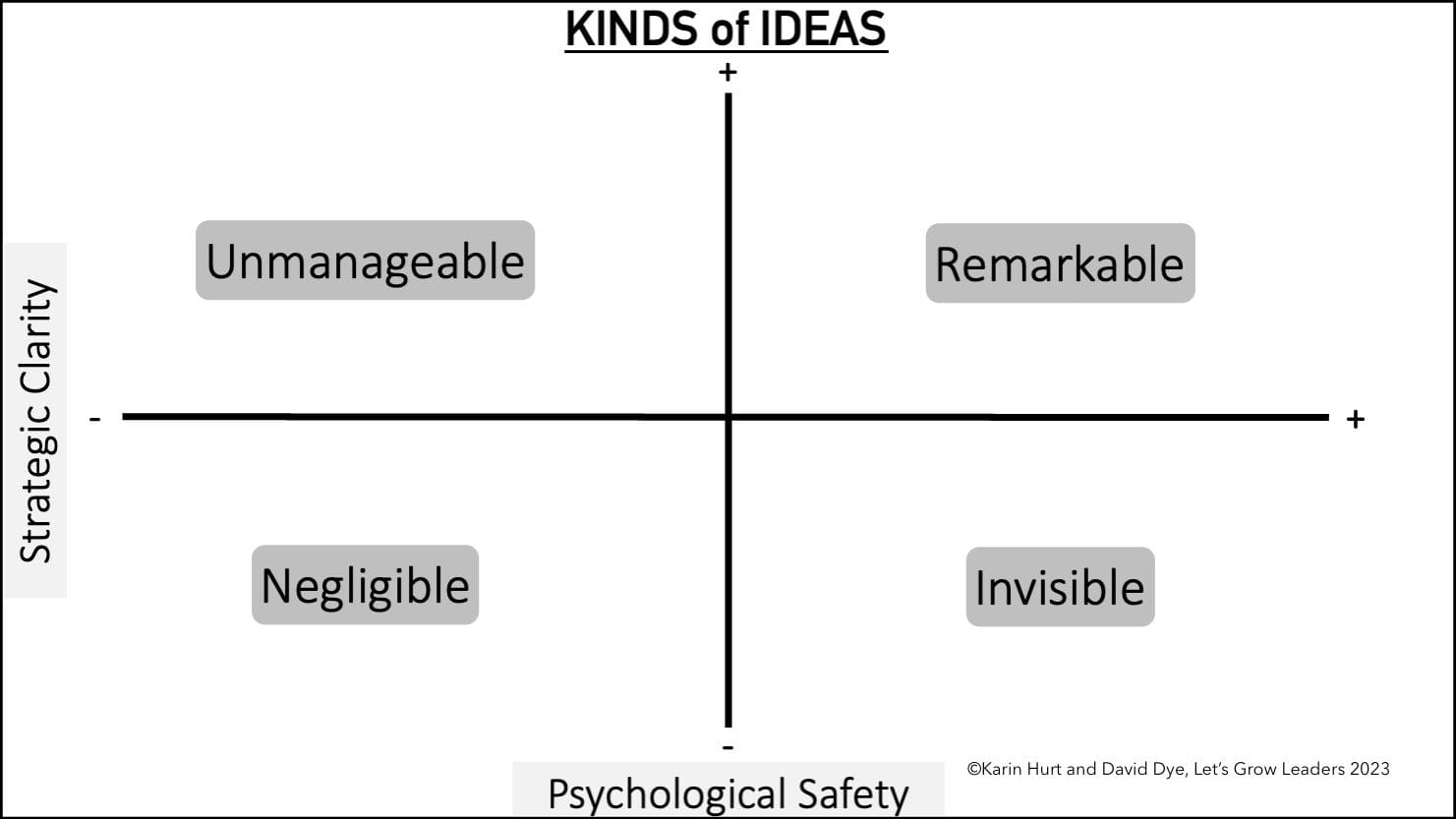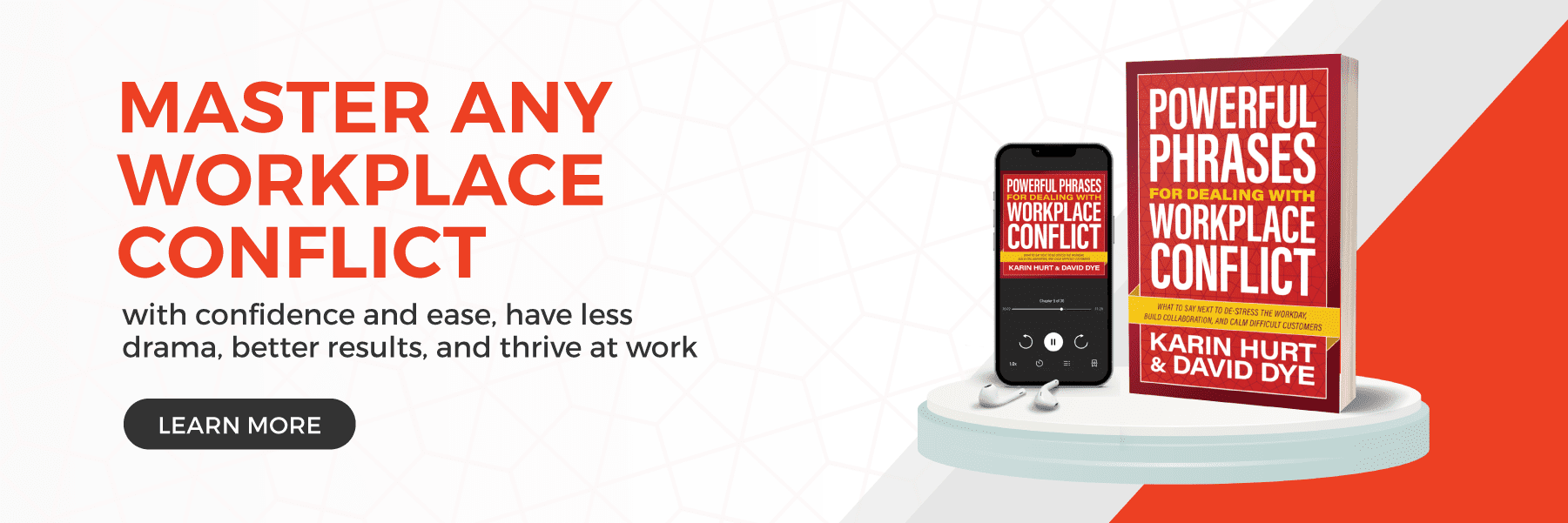Why psychological safety is important, but not enough
when it comes to workplace innovation
If you’re getting lots of ideas, you’re probably doing a lot of things right when it comes to encouraging workplace innovation —making it safe, asking for input, and responding well. That’s a great start. But how many of these ideas are you implementing? Imagine if you weren’t just getting lots of ideas, but remarkable, practical ones.
In Karin’s just released TEDx talk, she shares why psychological safety is vital, but not enough when it comes to workplace innovation— and a practical technique to help you get better ideas.

Why Psychological Safety x Clarity Leads to Better Workplace Innovation
In our research for Courageous Cultures, 50% of the respondents said they hold back ideas because nothing will happen. If you shoot down too many ideas, people will stop trying.
When you are clear about the kinds of ideas you need, and what would make them remarkable, you’ll get better ideas. The better the ideas, the more you’ll use them. The more ideas you use, the more people will share. Now you have a virtuous cycle of both confidence and innovation. Not to mention more remarkable ideas.
How We Learned the Secret to More Remarkable Ideas
When we first began experimenting with practical approaches to make it feel safer and easier to share ideas, we tried two approaches.
Sometimes, we say, just say bring us ANY practical ideas to improve the organization.
In this scenario, people learned some critical thinking and problem-solving skills, had fun, and got to know one another better. It wasn’t a complete loss. But most of those ideas weren’t implemented. Reinforcing the “nothing ever happens, so why bother” statistic.
With others, we got very specific about what a good idea would accomplish. Leaders identified three or four areas of the organization where they really wanted ideas and were very clear about any constraints the teams needed to consider, and then they applied the tools.
Similar process. Similar time investment. A significant difference in the number of ideas implemented.
A Closer Look at the Intersection of Clarity and Psychological Safety

The Two Dimensions of Innovation
- Psychological Safety: Cultivating an environment where people feel secure in expressing their thoughts.
- Strategic Clarity: Directing those thoughts towards meaningful areas for innovation.
The Role of Strategic Clarity in Decision-Making
- Clear Outcomes: Knowing where you want to go makes it easier to decide if an idea will help you get there.
- Focused Engagement: When people know what the objective is, they’ll contribute more effectively.
In the worst-case scenario, when psychological safety and strategic clarity are both low, most ideas will be negligible, and people are unlikely to have, or share them. Frustration is highest in this scene, and people are likely to give up, quiet quit, or leave.
When clarity is high, but psychological safety is low, people will have ideas, but they might be too nervous to share them. You’ll have invisible ideas, along with the frustration that first sparked our original research. This is the challenge that most people deeply committed to psychological safety are working to solve.
When psychological safety is high, but clarity is low, you’ll end up with lots of ideas. There may be some good ones, but it’s tough to see them. You’ll spend significant time listening (and responding to) ideas, which eats up time from implementing the good ones. You’ve got a pile of unmanageable ideas. This is a challenge that many people deeply committed to psychological safety are faced with.
And, why some leaders shy away from encouraging workplace innovation, “we don’t need more ideas, we have too many already, we just need to execute.”
When strategic clarity and psychological safety are both high, you’re more likely to get remarkable Ideas. When you have more remarkable ideas, there’s less frustration and more usable innovation.
Your turn.
How have you seen better clarity lead to more remarkable ideas?








0 Comments